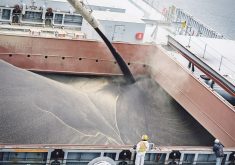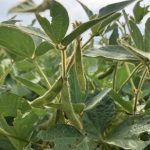When Manitoba Pork Council chair Karl Kynoch took the podium last week, he didn’t sugar-coat the message.
“This is one of the most challenging times we’ve ever been in,” Kynoch said April 8 at Manitoba Pork’s annual general meeting.
The only hope he could offer pork producers was the familiar agricultural refrain – wait until next year.
“From the best information we’re hearing … the producers who get through this year should be rewarded in 2009,” he said.
Ron Gietz, vice-president of Informa Economics, backed Kynoch’s expectation of a turnaround.
Read Also

Russian wheat exports start to pick up the pace
Russia has had a slow start for its 2025-26 wheat export program, but the pace is starting to pick up and that is a bearish factor for prices.
“I believe price recovery will begin early in 2009,” said Gietz.
“I have an average price of $67 a hundredweight US for lean hogs for the year in 2009.”
In recent weeks Chicago Board of Trade lean hogs have traded around $58 a cwt. for the nearby contract. Gietz’s expectation for the remainder of 2008 is that an abundance of hogs, in the United States and Canada, will hold prices down.
“My message is I wouldn’t be looking for much help at all in 2008,” said Gietz, who studies the hog market for the U.S.-based Informa. “We’ve got to work through the large supplies.”
On March 28, the U.S. Department of Agriculture issued a bearish report on hog numbers. It reported an inventory of 65.9 million hogs and pigs in the U.S, up seven percent from 62 million in the March 2007 report.
In Canada, hog numbers have dropped, but not enough to satisfy the market. The January 2008 livestock survey by Statistics Canada said there were 14 million hogs on farms, 897,000 fewer than in January 2007.
Ron Plain, hog market analyst at the University of Missouri, expects high rates of slaughter in 2008 to reduce hog numbers. But high feed prices mean inventory must shrink further to make the industry profitable again.
“Because feed costs are so gosh awful high, it’s going to be a long process … to get back to high enough prices to pay for the feed bill,” said Plain. “We’ve got a long reduction in the sow herd in front of us.”
Gietz noted the Canadian share of the North American sow herd jumped from 13 percent in 1993, to 21 percent by 2005. A low Canadian dollar allowed producers to expand their operations and remain profitable, he said, regardless of the cycle of hog prices.
Gietz said a higher loonie is not a death knell for Canadian producers. There is pain now, he said, but hog farmers should benefit in the long run from reduced capital costs and sustainable competitiveness.















